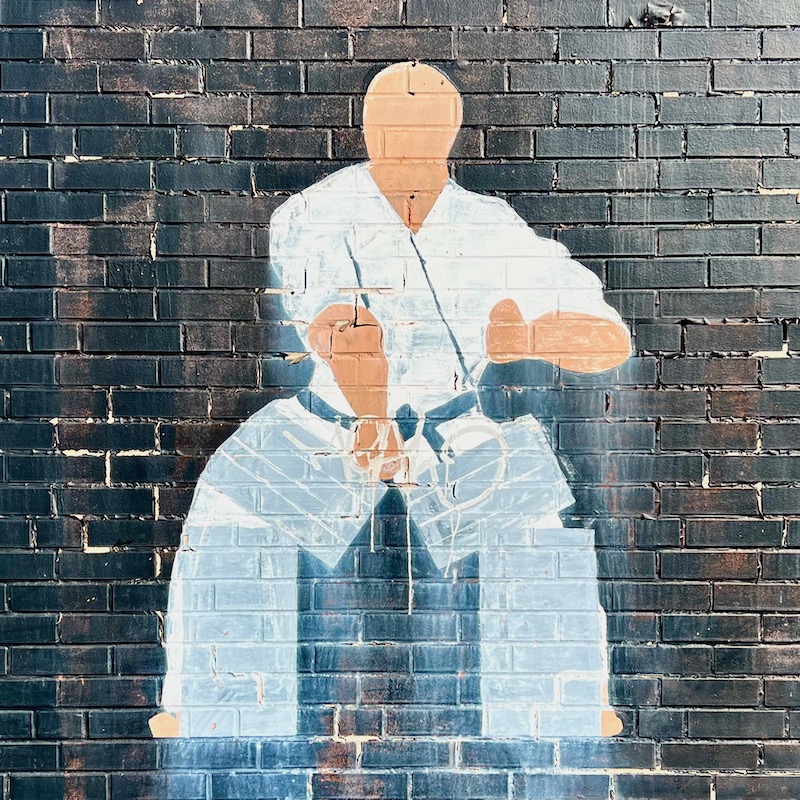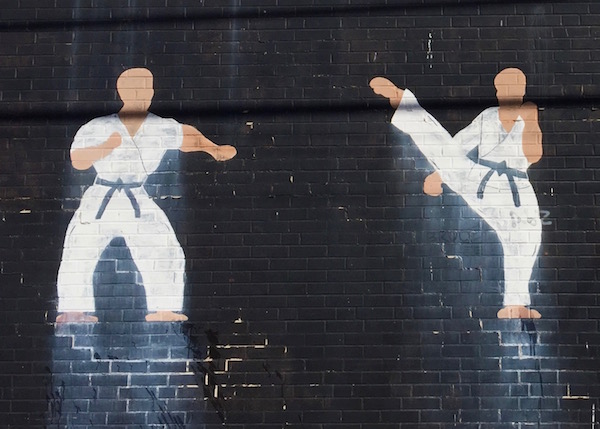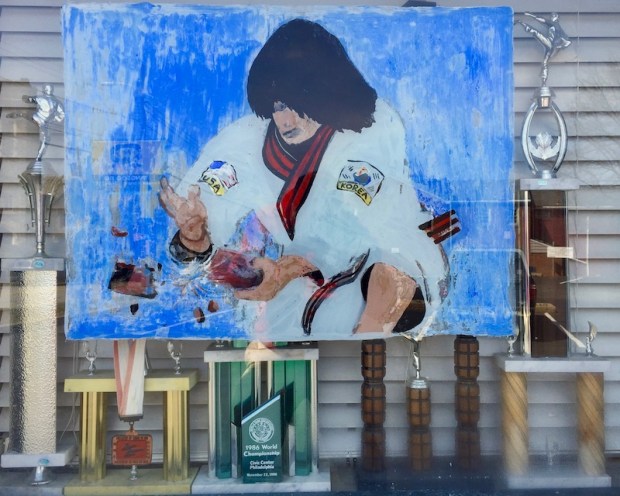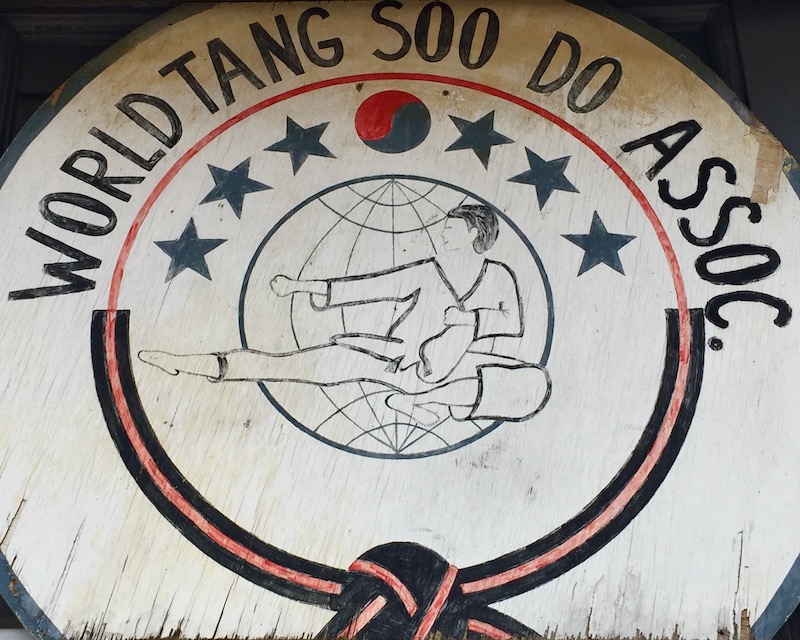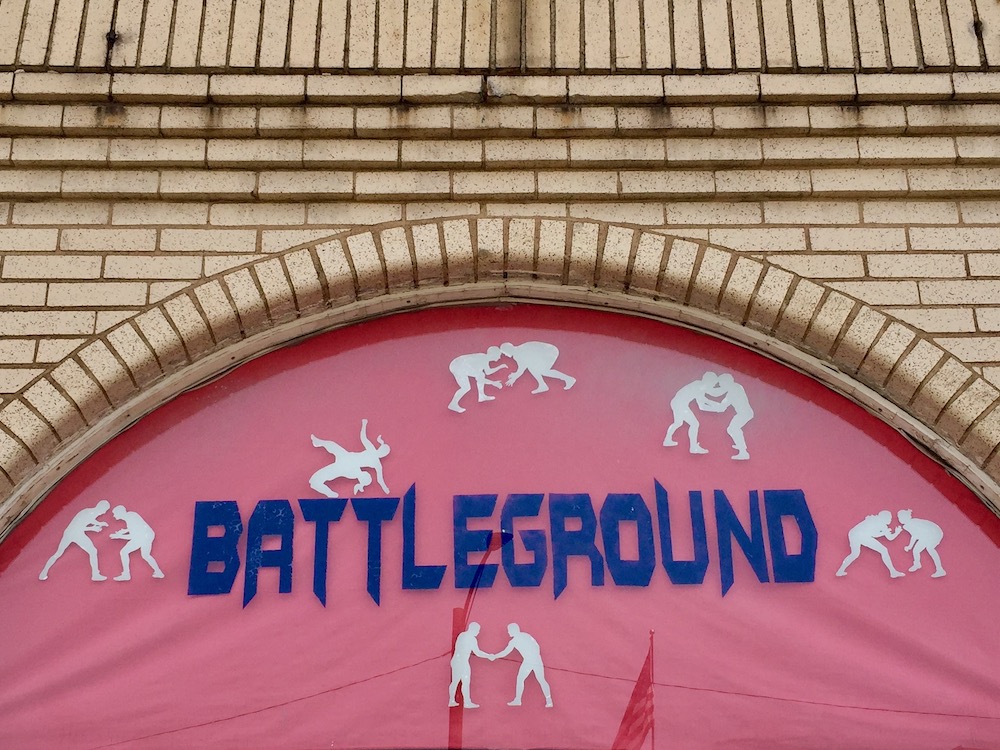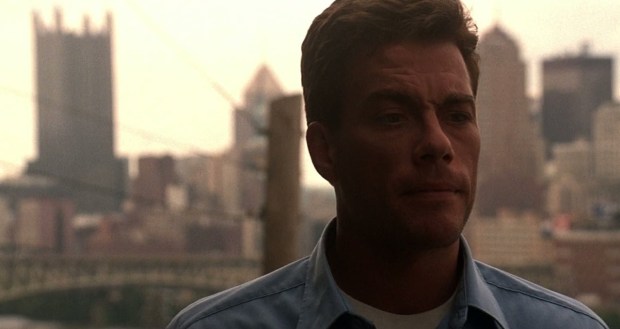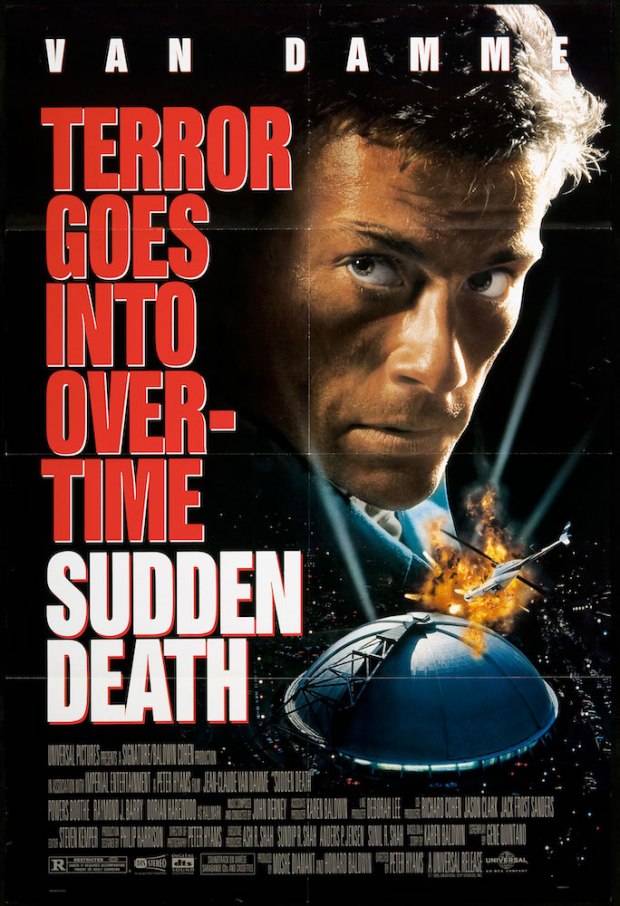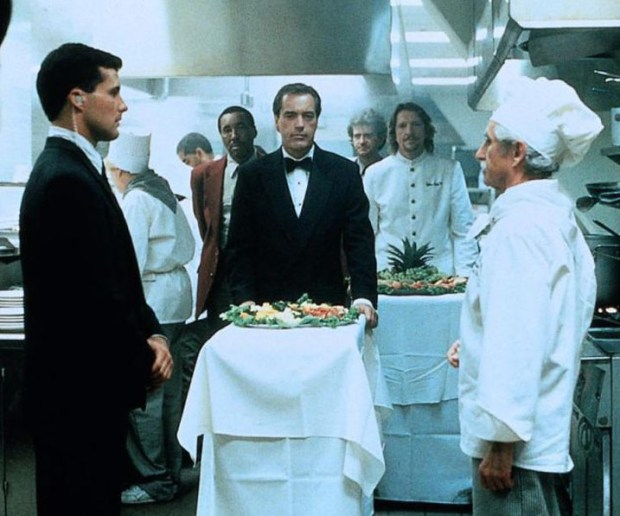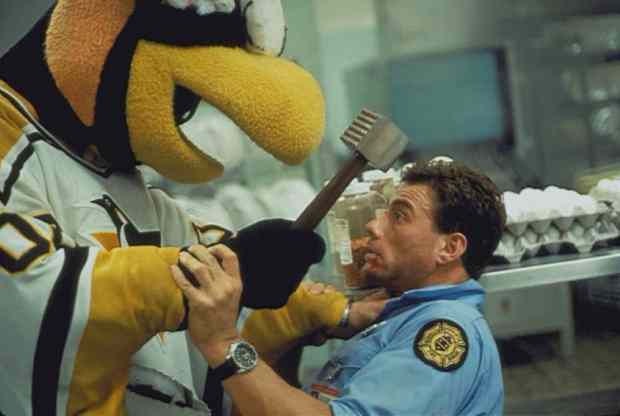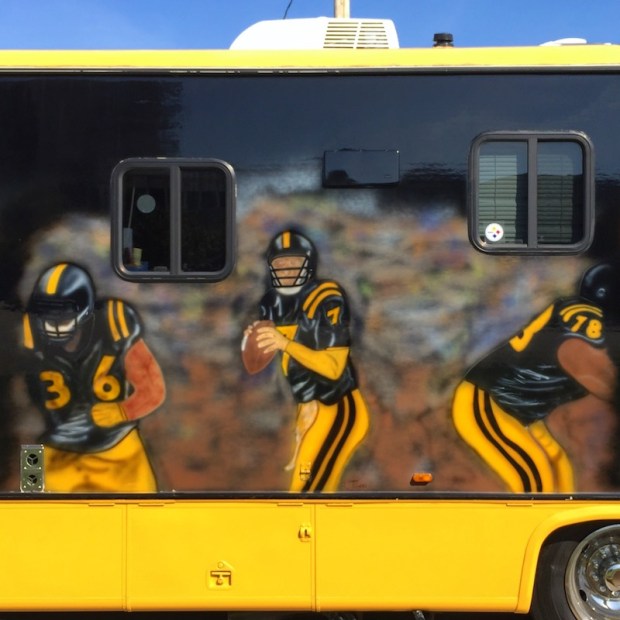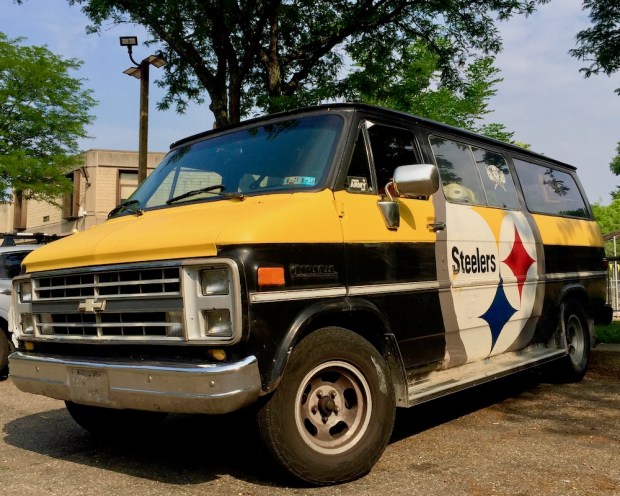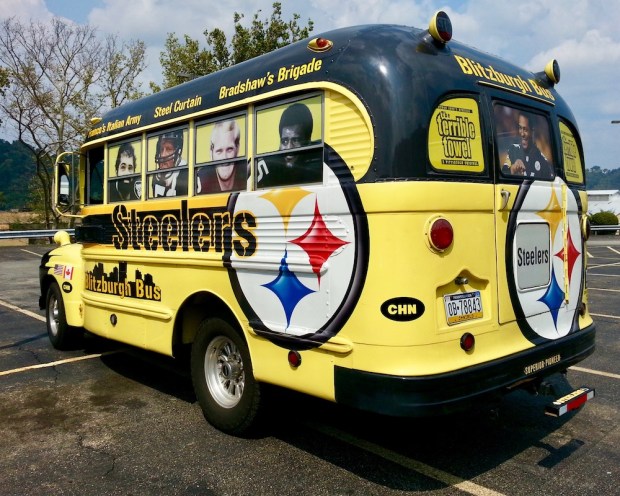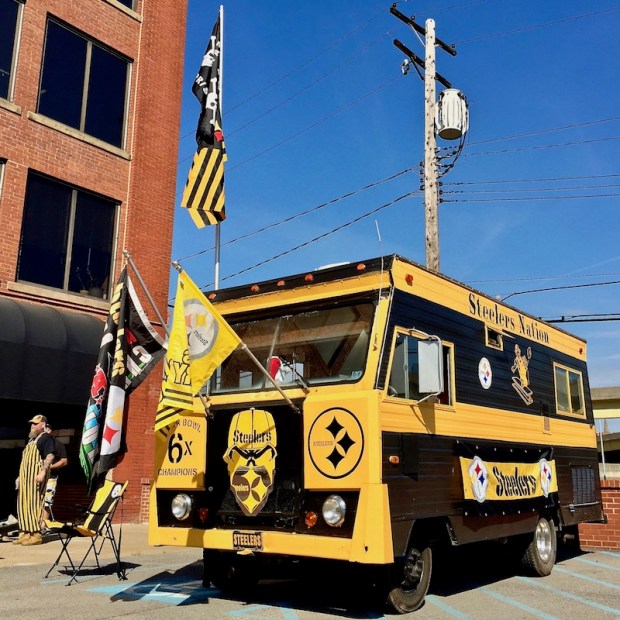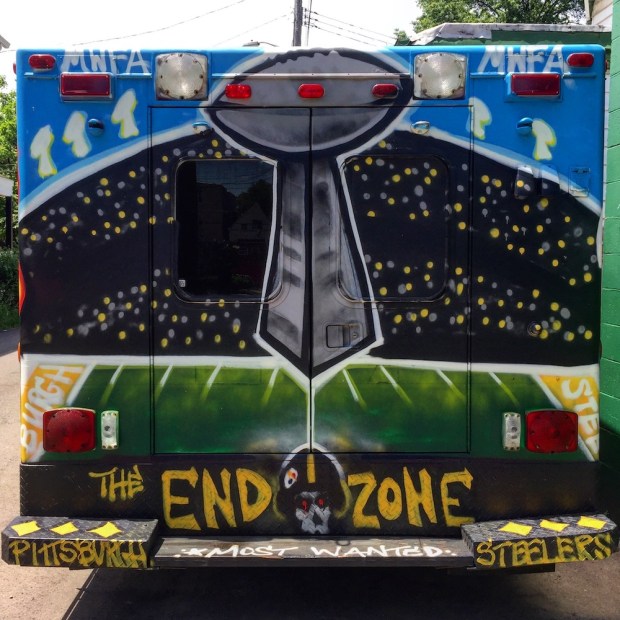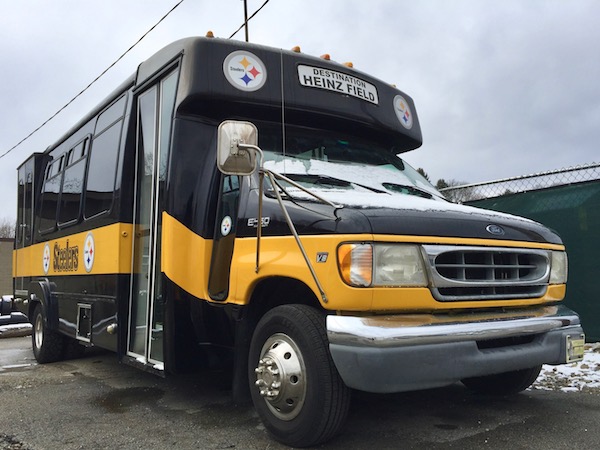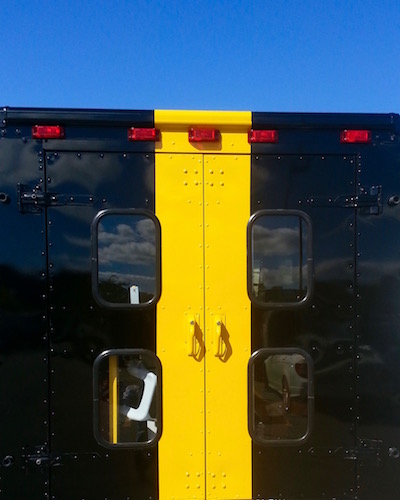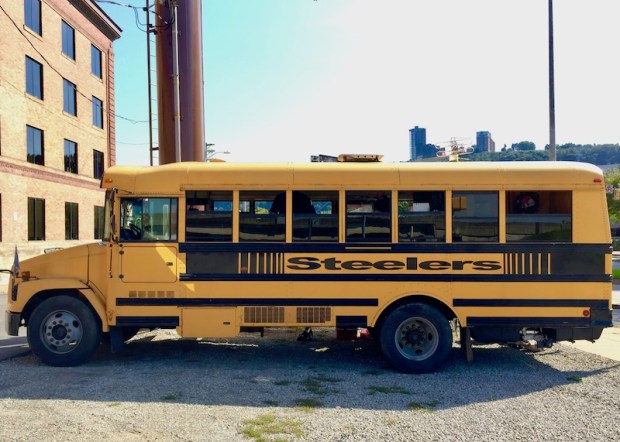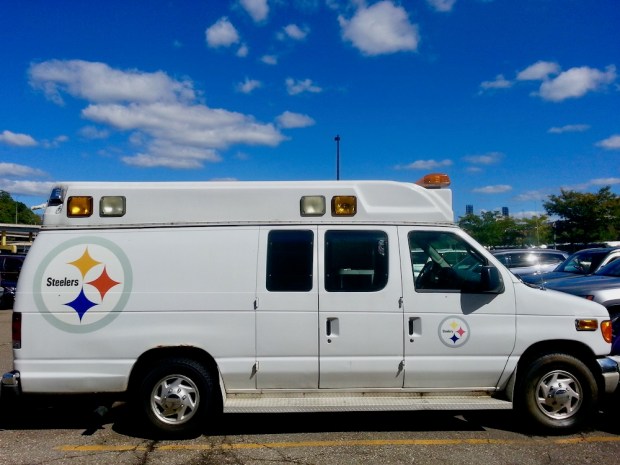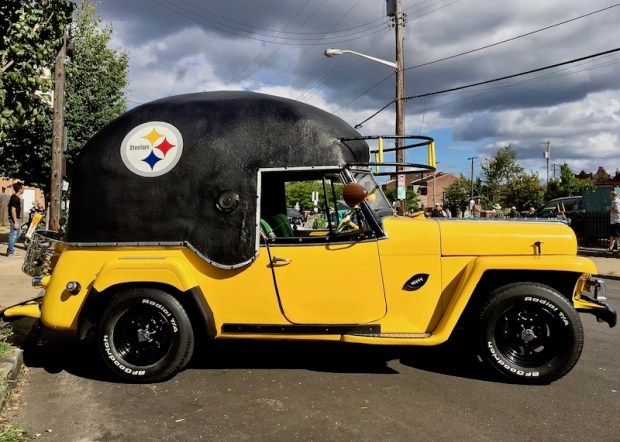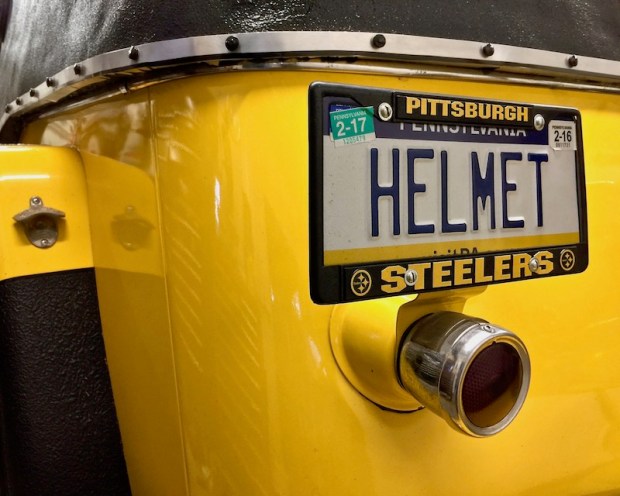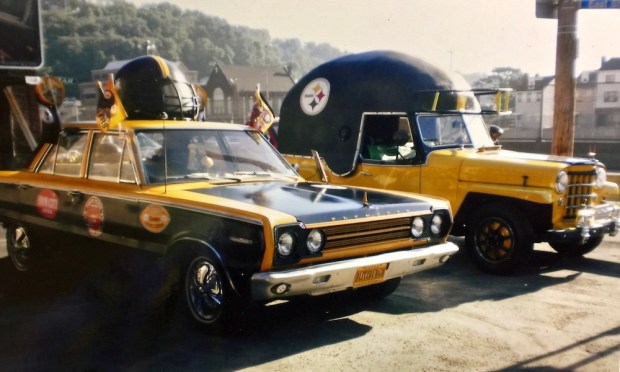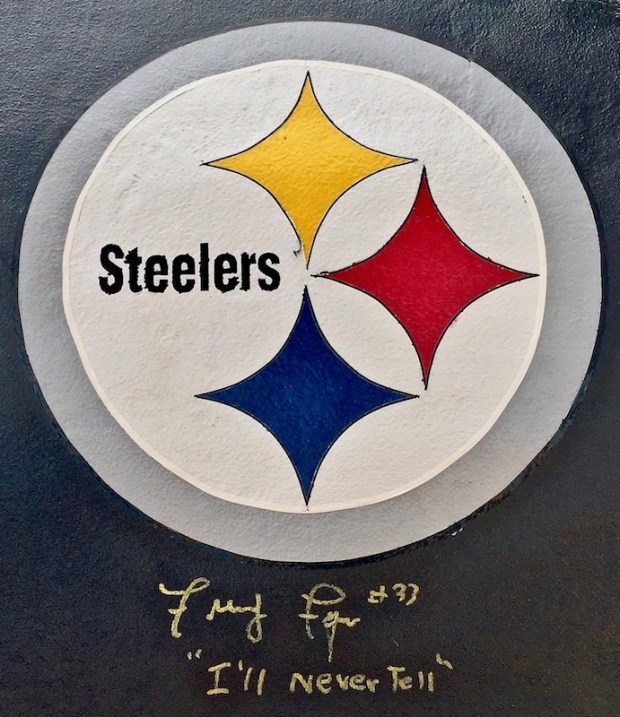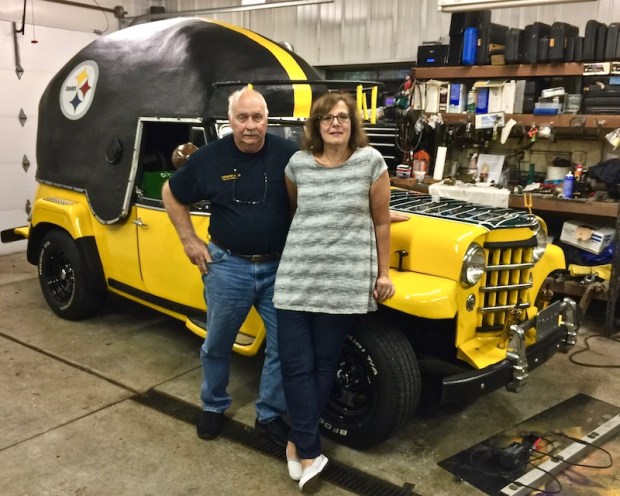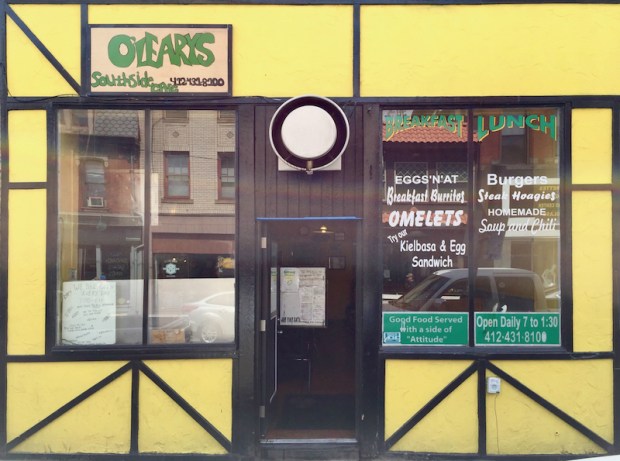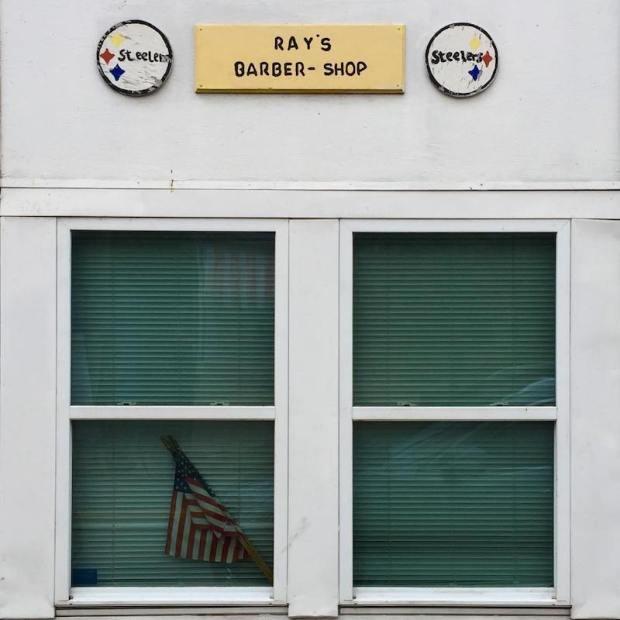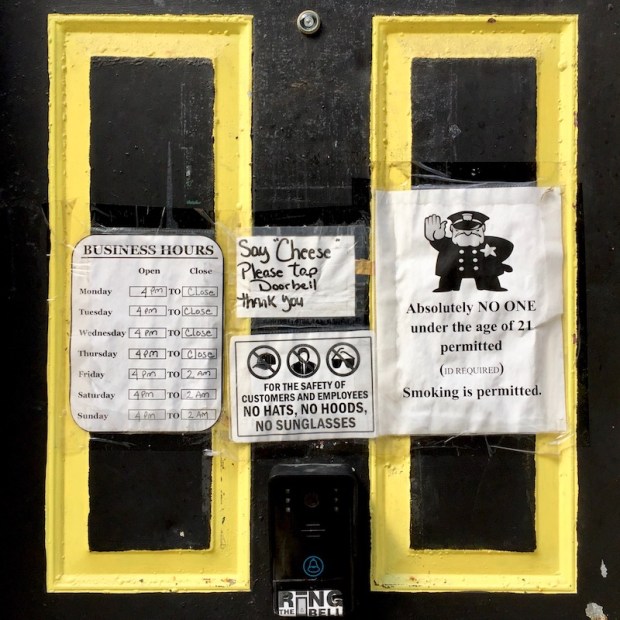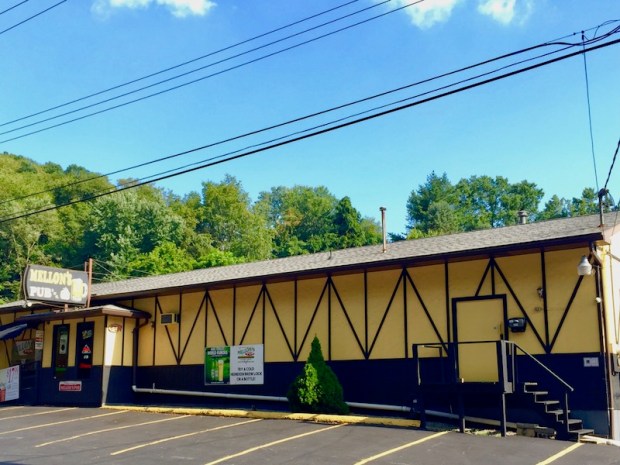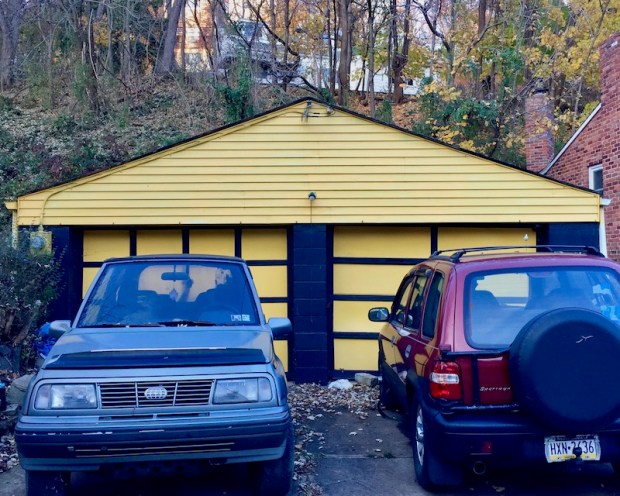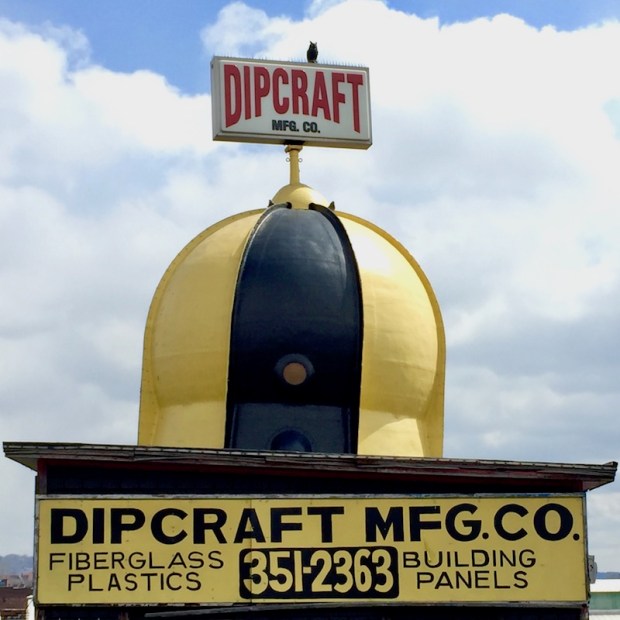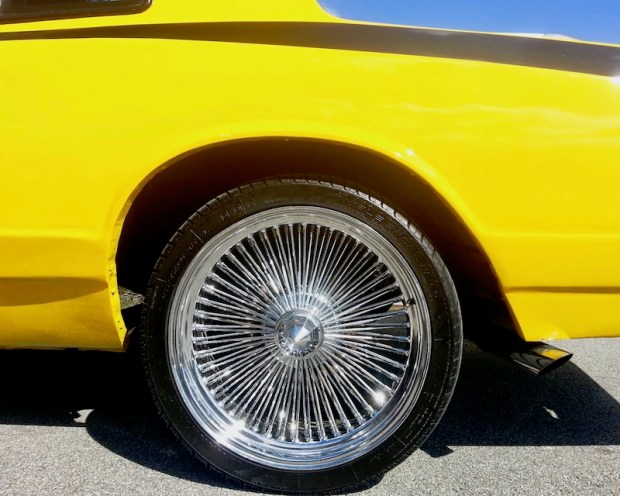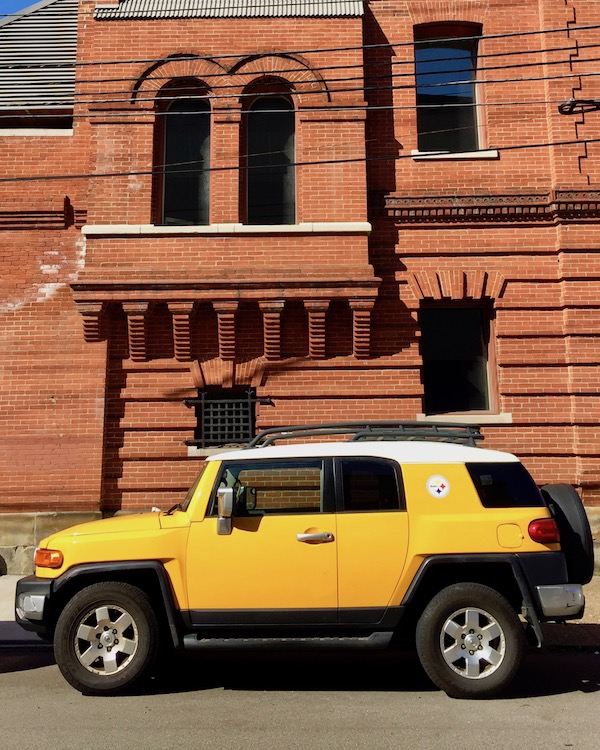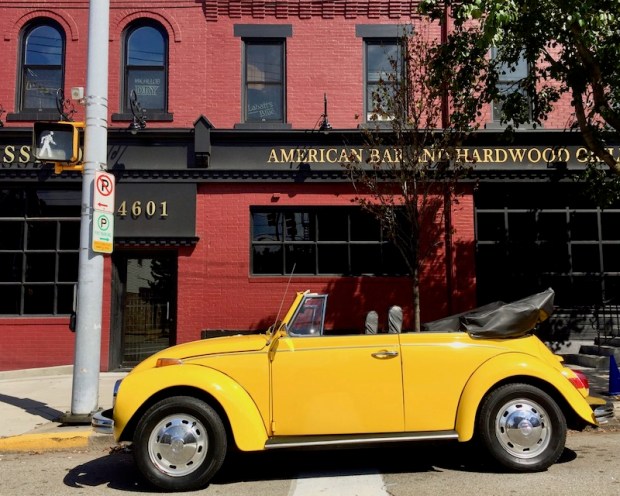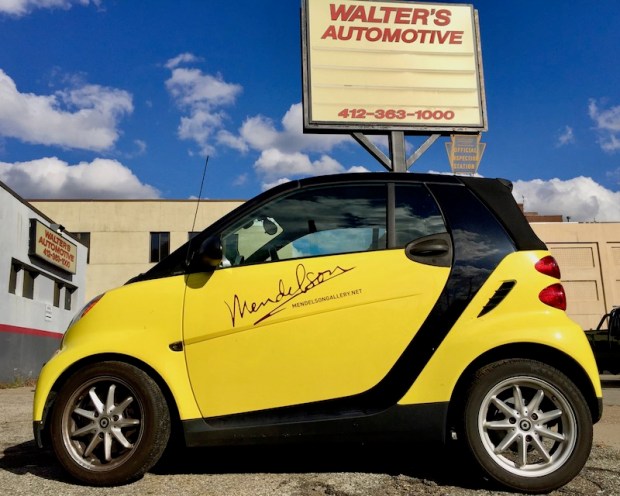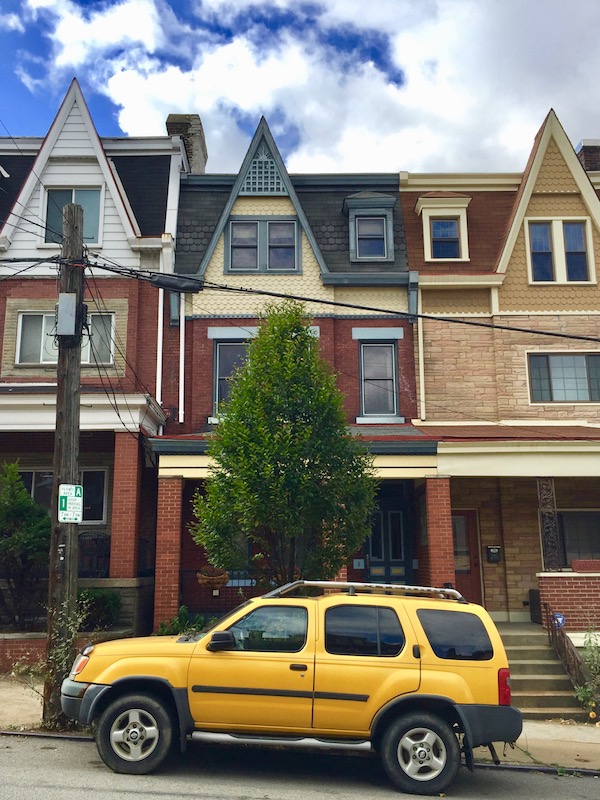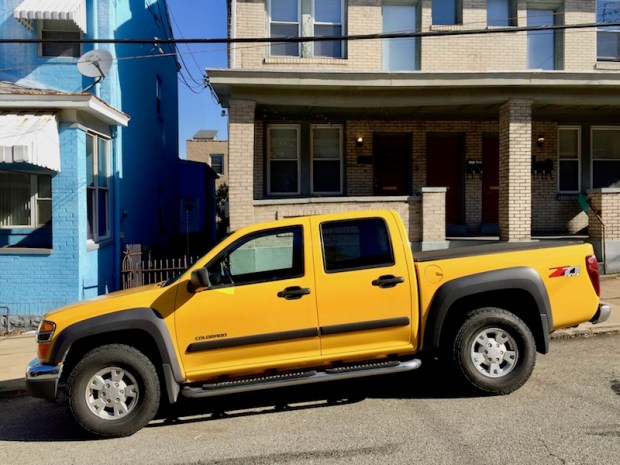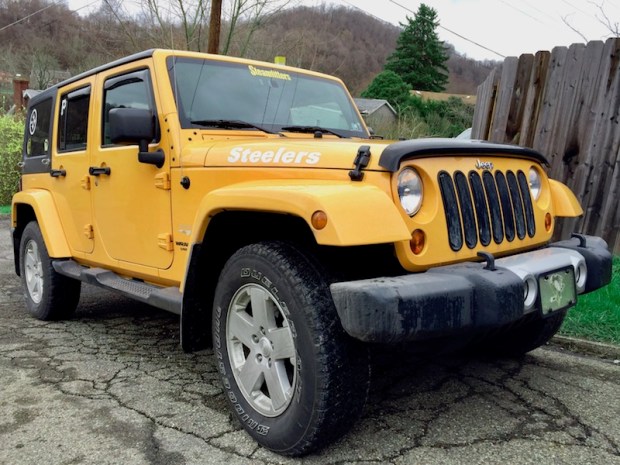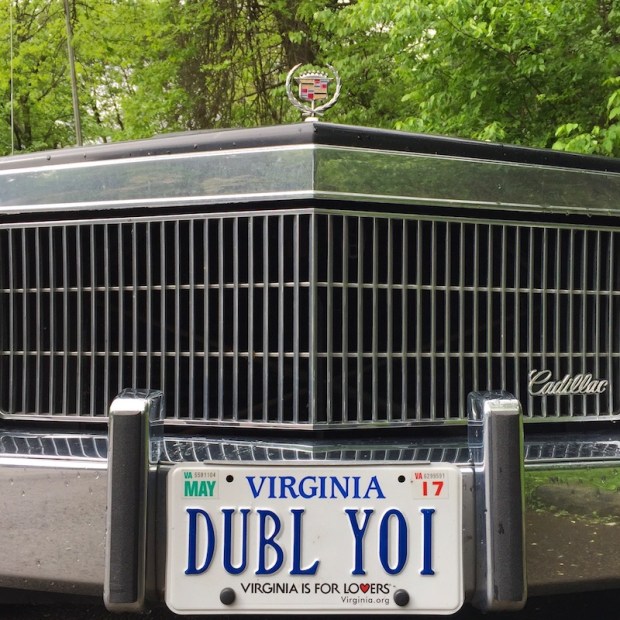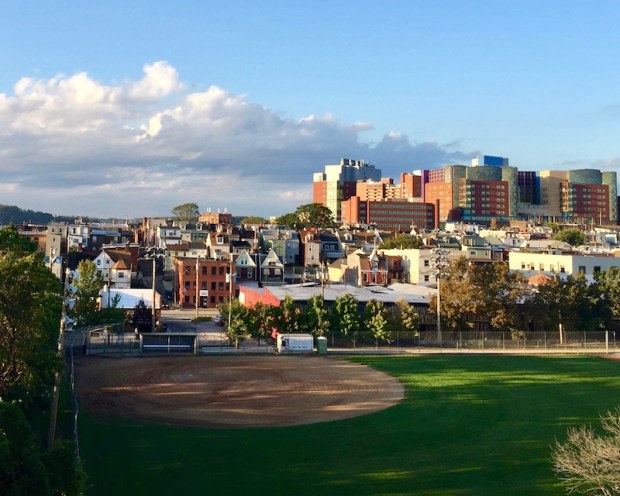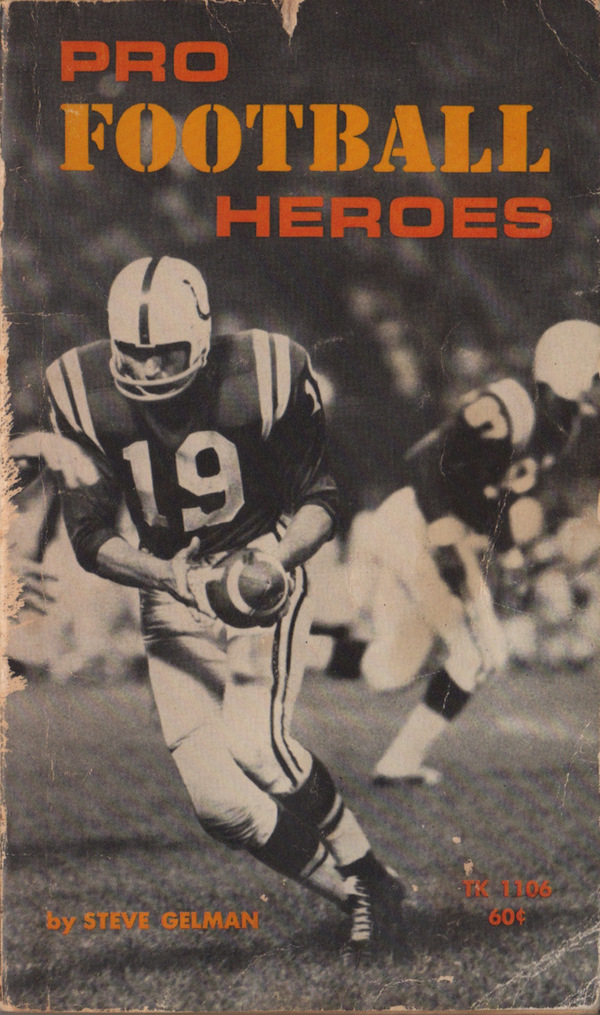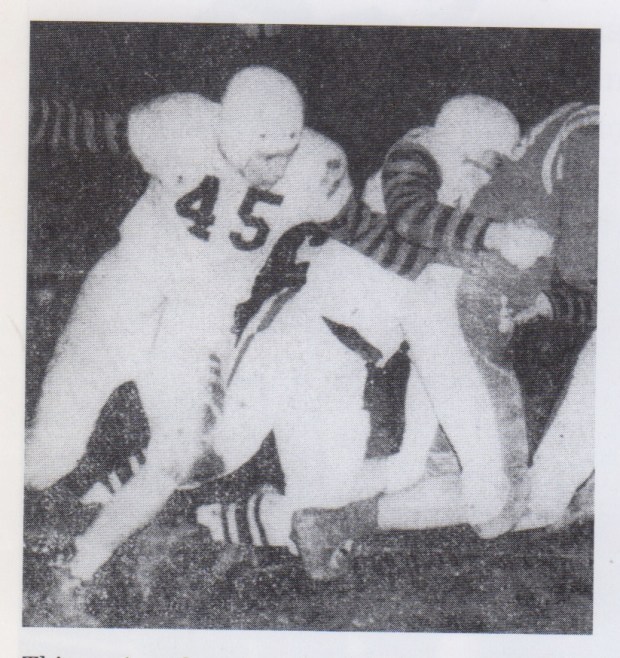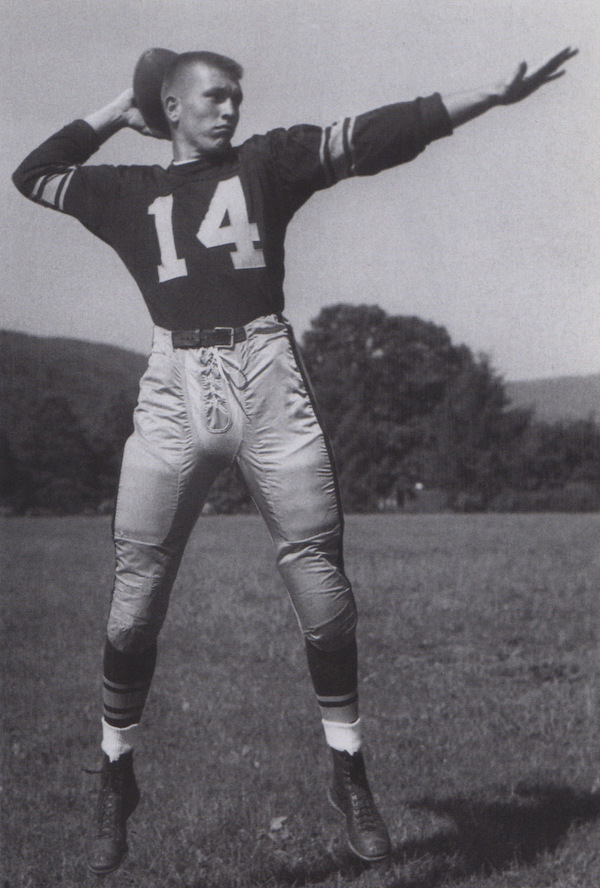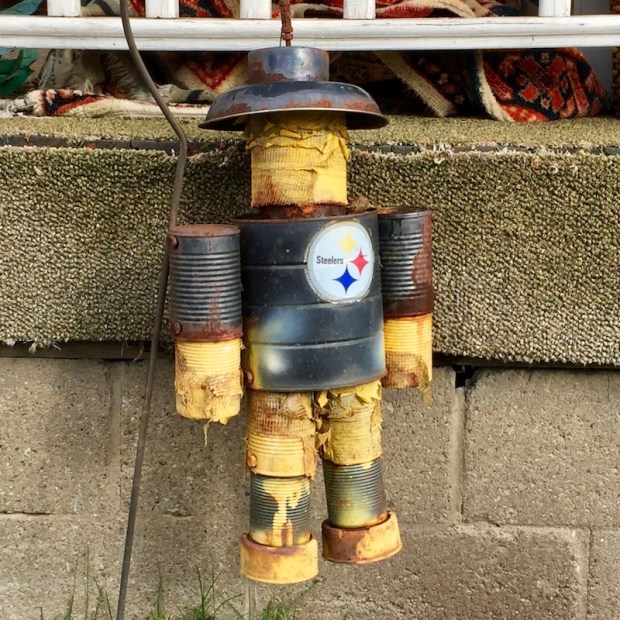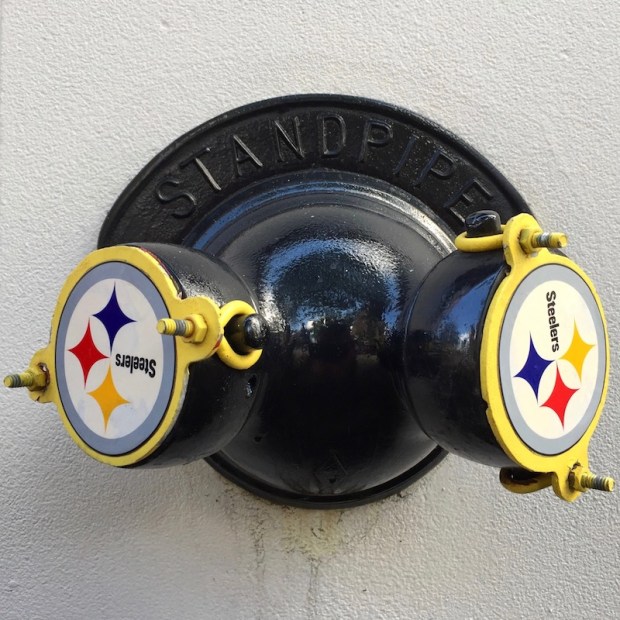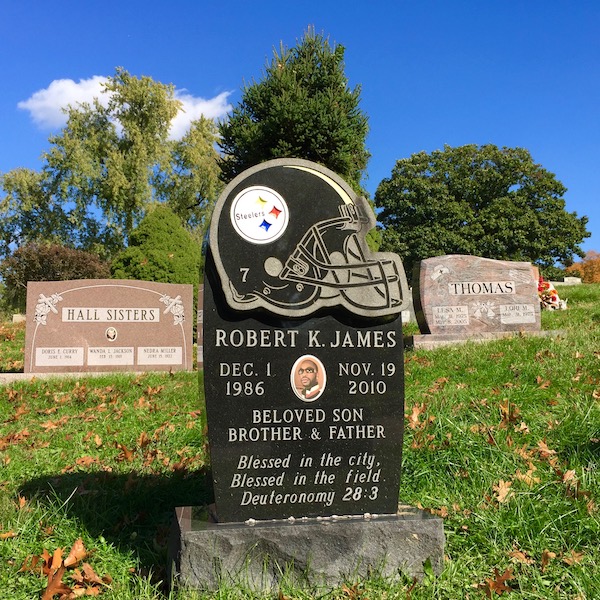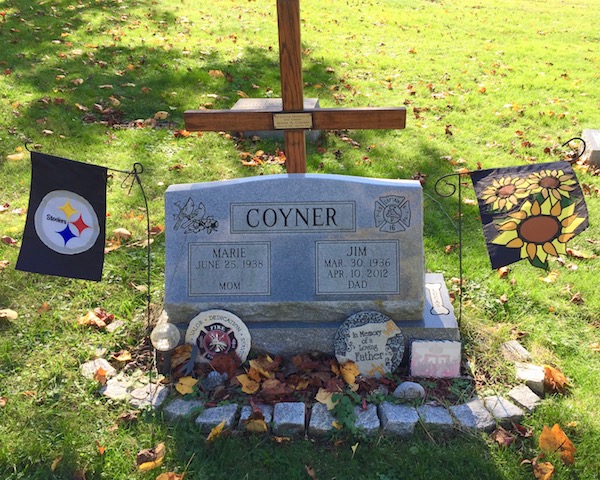
All smiles. [l-r] (trainer) Paul Denny, Danny McGibbeny, Bernie Mitton, Mark Cox, 1976
sports fans, no matter how much they may deny it, suffer a common delusion. These devoted optimists assume their acts of ritual loyalty in the stands, parking lot tail-gates, and even back home on the sofa, will somehow compel their team to victory on the field of play.
These fantasies range from the relatively credible–filling a stadium with a fired-up crowd makes home field advantage a very real thing–to completely ludicrous acts of superstition. We’ve all known someone with a ridiculous game-day habit: the requirement of a particular team jersey; the arrangement of beverages on a coffee table; a tiny bird-sized Steelers helmet the pet parakeet must wear during the playoffs. It’s goofy, but it works…some of the time.

Clint Burton (right) with Triangles player Peggy Michel and team owner Frank Fuhrer, 1975
Tennis star Betty Stöve needed to use the crapper–bad. It was right before her match at the old Civic Arena and teenage Clint Burton was the kid on the bench with the key to the locker room. The only thing was…he couldn’t actually find where he’d put it. It was a simple mistake–Clint had switched sideline assignments with another boy who’d failed to hand over the most important thing Clint needed to do the job.
Stöve lost her set–likely in some level of discomfort–and her San Francisco Golden Gaters fell to the Pittsburgh Triangles on this particular summer night in 1976. It’s not how the average fan would choose to tip the scales for his or her team, but sometimes things just work out the way they do.

The Pittsburgh Triangles at home on a WTT multi-color court
In 1974, American professional tennis was on a tear. A year earlier, Billie Jean King had defeated Bobby Riggs in the much-celebrated, prime-time “Battle of the Sexes” match. King’s then-husband Larry, along with three other financiers, rode the wave to a completely new concept in the sport: convert the traditionally staid, solo/duet tennis match into a raucous team sport with streamlined rules, heavy crowd involvement, and a rock-and-roll atmosphere.
On the strength of Billie Jean King’s involvement, along with that of Wilt Chamberlain and Arthur Ashe, the new World Team Tennis league was able to attract a who’s-who of mid-’70s professionals in the sport. King was a player herself, as were Chris Evert, Martina Navratilova, John McEnroe, Jimmy Connors, Björn Borg, and “Nasty” Ilie Nastase.

“Nasty” Ilie Nastase of the New York Sets/Hawaii Leis, some time in the 1970s [photo: the Internet]
World Team Tennis games were played on a multi-color court, the advantage rule was dismissed to speed up play, and scoring simplified to
1-2-3-game[1]. Matches consisted of five sets where teammates switched off for one set each of women’s singles, men’s singles, women’s doubles, men’s doubles, and mixed doubles. Scores of individual games were accumulated across the entire match. If you were lucky, a close match might be decided with something called a “super-tiebreaker.”
Breaking all rules of team sports, nearly half the clubs took references from the mechanics of the game into naming their franchises. There were no mere Lions or Spartans in World Team Tennis. Instead, the Chicago Aces, Cleveland Nets, and New York Sets did battle with the Phoenix Racquets, Indiana Loves, and L.A. Strings. [Aside: there is no doubt in this blogger’s mind that “The Baltimore Balls” was suggested at some point.] These were complimented by a collection of very of-their-era team names: the Houston E-Z Riders, Minnesota Buckskins, and Hawaii Leis. Most impressive were the double-entendres delivered in naming both the San Diego Swingers[2] and Boston Lobsters.

Danny McGibbeny [on phone] and Daniel James McGibbeny
“I was the little stats guy,” Clint Burton says today, “I was always a math geek.” At just 13 years old, it was an unlikely move to put a middle schooler on the Triangles payroll as assistant statistician, but it helps to have your uncle Danny running promotion.
The year prior, a fresh-out-of-college Danny McGibbeny would charm his way into the fledgling Triangles organization–one of the league’s original 16 teams–as its first public relations director. McGibbeny was responsible for numerous promotions and activities, including writing copy for the local version of the league’s magazine/game program Super-Tiebreaker.
By 1975, McGibbeny had assumed the role of general manager, while still acting as P.R. director. There, he had the freedom to bring on his friends and family in a variety of support roles for home games. “Danny got everyone a job,” Burton says, “his friends from college, kids in the neighborhood. My father ran the scoreboard and my sister was a ball girl.”

Clint’s sister and Triangles’ ball girl Karen with the aptly-named Syd Ball, 1976
Burton’s early interest in sports, statistics, and “math geek” mind made the 13-year-old an easy fit as assistant to official stats man Drew Ondik. Clint went beyond the standard league-assigned stats sheet to develop a unique set of custom numbers based on additional play factors he would track during matches. At the end of the night, all of Clint’s work was typed-up and sent via an early Xerox fax machine to the league office in New York.

Triangles star Vitas Gerulaitis on the cover of a 1976 Super-Tiebreaker magazine/program [photo: funwhileitlasted.net]
The Triangles didn’t have any players with the lasting name recognition of Chris Evert or Jimmy Connors. That said, Pittsburgh’s two biggest stars, Vitas Gerulaitis and Evonne Goolagong, led a group that would go on to win the 1975 WTT championship over Betty Stöve’s Golden Gaters in a home court match at the Civic Arena.
Gerulaitis, with his purple Lamborghini, monster stereo system, and on-court antics, was the undeniable crowd favorite. Vitas was so popular that he had his own rollicking “G-Men” cheering section at the top of the arena and occasionally paid for these super fans to travel to nearby away games.
Clint was there see Evonne Goolagong hoist the 1975 WTT championship trophy and–anticipating the winning coach Gatorade dumps of a generation later–there in the locker room for team owner Frank Fuhrer as he was hauled into the showers, fully clothed.
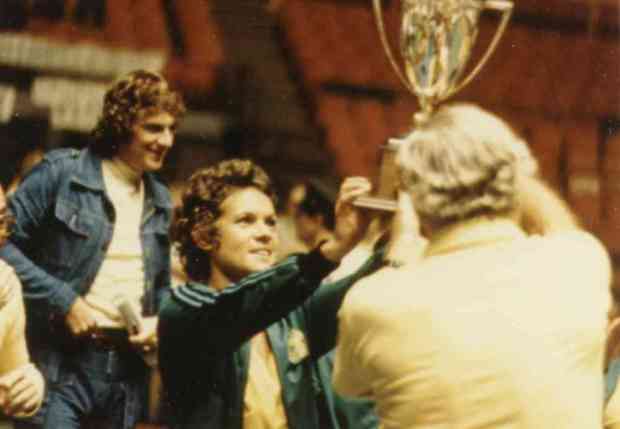
[l-r] Danny McGibbeny, Evonne Goolagong-Cawley, and coach Vic Edwards after winning the WTT Cup at the Civic Arena, 1975
, when a sports team wins a championship, they try to change as little as possible–if it ain’t broke, don’t fix it. But World Team Tennis was not a typical sports league. “It was ahead of its time,” Burton says, “it gathered momentum, but couldn’t sustain itself.”
The 1976 season was one of highs and lows for The Triangles. There were player moves–fan favorites Rayni Fox and Kim Warwick were replaced by Sue Stap and Bernie Mitton–coaching changes, and a roller-coaster ride in the win-loss column.
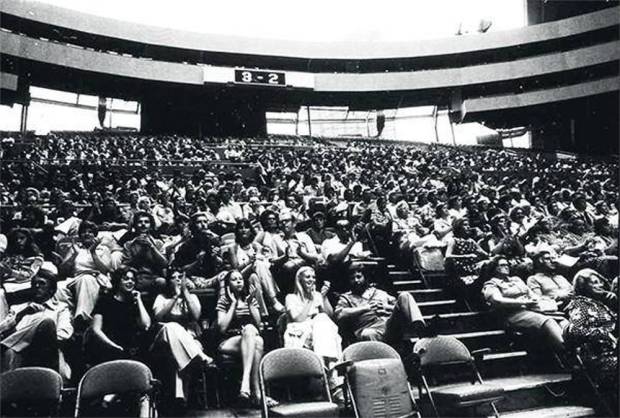
Triangles fans watch a sold-out match with the Civic Arena roof open, 1976
Most radical was the elevation of McGibbeny to his third job with the organization in as many years–this time as skipper. Danny replaced player/coach Marc Cox midway through the season while still maintaining general manager and public relations duties. Though untrained in the sport, the McGibbney-led team ultimately succeeded, going on a winning streak that took the Triangles back to the playoffs. “He didn’t know anything about tennis,” Burton says, “but he knew just how to talk to the players. Once he took over, they all started having fun again.”

Bill Winstein comic for the Pittsburgh Post-Gazette on Danny McGibbeny taking over as coach of the Triangles, 1976
After the 1976 season, both the Pittsburgh Triangles and World Team Tennis were in rapid decline. The league would limp along for another few years, but the Triangles day had come and gone. First subsumed in a one-season, combined Cleveland-Pittsburgh “Tri-Nets” team that never gelled, by 1978 professional team tennis had left Pittsburgh forever.
More painful than the fate of this oddball sports experiment was the parallel loss of its absolute heart in Danny McGibbeny. Suffering from quickly-declining physical health, Danny wouldn’t have had the strength for the 1977 season, even if the team had soldiered on. McGibbeny developed cancer that came on ruthlessly fast. He died on Sept. 6, 1977 at just 26 years old[3].
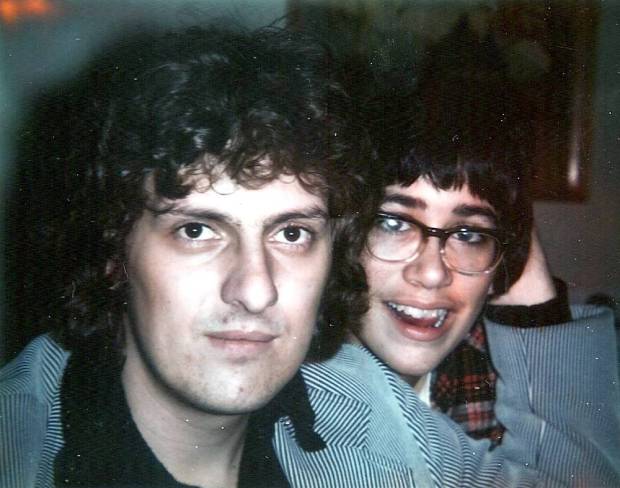
“He was my hero,” Danny McGibbeny and Clint Burton, Christmas, 1975
Clint Burton’s career in professional sports statistics ended there, before he ever got out of high school. But the same analytical mind propelled him into the world of old-school “big iron” computer programming–FORTRAN, COBOL, and the like.
Today, Clint maintains the terrific Brookline Connection web site and FaceBook page. There, he works to document, digitize, and connect various aspects of the site’s namesake South Hills neighborhood. We thank Clint for all his help opening up to tell us his story and providing us with so many great photographs.
All photos courtesy Clint Burton, except where noted.

Always a party. Invitation to Goolagong/Gerulaitis pajama party, 1976.
[1] Traditionally, tennis games are played with an arcane scoring system of 15/30/40 and then a series of “deuce”/”advantage” points with the requirement to win a game by 2.
[2] The Swingers apparently never actually played a game, but their proposed team name is good enough to warrant a mention. Source: https://en.wikipedia.org/wiki/World_TeamTennis.
[3] Clint Burton has a great tribute page with many more stories about Danny McGibbeny on his site brooklineconnection.com.



